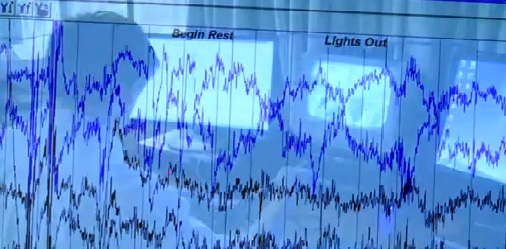Sleep is the gateway to another existence – one that we all share. It is a place of retreat, replenishment, and reinforcement. For those who are aware, it is another place in which we live. For characters in the Unfolding Series, the experiences they share with each other in dream are just as real as when they are awake. Not many people in the modern world recognize that this form of conscious activity is actually possible.
The scientific community considers the sleep state to be full of unknowns and is actively researching it to see what may be found and understood. Sleep is defined as:
… a naturally recurring state characterized by reduced or absent consciousness, relatively suspended sensory activity, and inactivity of nearly all voluntary muscles. It is distinguished from quiet wakefulness by a decreased ability to react to stimuli, and is more easily reversible than being in hibernation or a coma. Sleep is a heightened anabolic state, accentuating the growth and rejuvenation of the immune, nervous, skeletal and muscular systems. – Wikipedia
Presently, it is uncertain exactly how much sleep adults need, but a period of seven to eight hours is generally recommended. Though for purposes of comparison, when active, I may get by on four to five hours plus one or two catnaps and do this for months on end.
Though there are a small number of documented exceptions, it is recognized that without sleep people become less healthy in body and in mind. Sleep appears to be necessary for repairing the body, training the mind, and restoring efficiency.
Flexibility ought to be the rule rather than a fixed number of hours for every person. Social custom and practices may also flavor an individual’s sleep patterns. It’s said that in early European society, people would go to bed when it became dark and wake up in the middle of the night for perhaps several hours to attend chores or visit with family members before returning to sleep for the remainder of the night.
In a number of countries with hot afternoons, siestas are taken mid-day in order to recharge and avoid working during the warmest temperatures. Most people have an natural physiological change that is often described as “the after lunch dip.” Industrialized countries may eventually, and grudgingly, adopt a “power-nap” as a means to increase productivity and reduce stress. A 2007 study in Greece showed that people who took a nap during the day had a reduced risk of heart attack.
There are four stages of sleep which a person normally passes through beginning with NREM (non-REM) stage 1, NREM stage 2, NREM stage 3, and finally REM, characterized by rapid eye movement with most other muscles unable to move. A sleeper may experience these stages every 90 minutes.
The final stage between sleep and wakefulness is where dreams may be recalled and carried over into waking consciousness. In order to aid in the retention of dreams, I lie still when I first wake up. Dreams appear to be held in short-term memory. Too much activity will flush these memories before they can be recorded.
Below is a short video from the PBS NewsHour reporting on the current generally accepted knowledge related to sleep in the latter part of the year 2012.
The Power of Sleep
The nature of sleep, its impact on mind and body, and what we are consciously capable of when in that state, remain an undiscovered country available to each and every individual. Exploration of consciousness as we sleep can yield amazing insights into ourselves, our world, and the nature of reality.
– Jeffrey A. Limpert
__________________
References:
http://en.wikipedia.org/wiki/Sleep
http://en.wikipedia.org/wiki/Siesta
http://www.ninds.nih.gov/disorders/brain_basics/understanding_sleep.htm
Image Information:
The Power of Sleep
By PBS NewsHour
http://www.pbs.org/newshour

 Amazon – Unfolding: Awakening
Amazon – Unfolding: Awakening